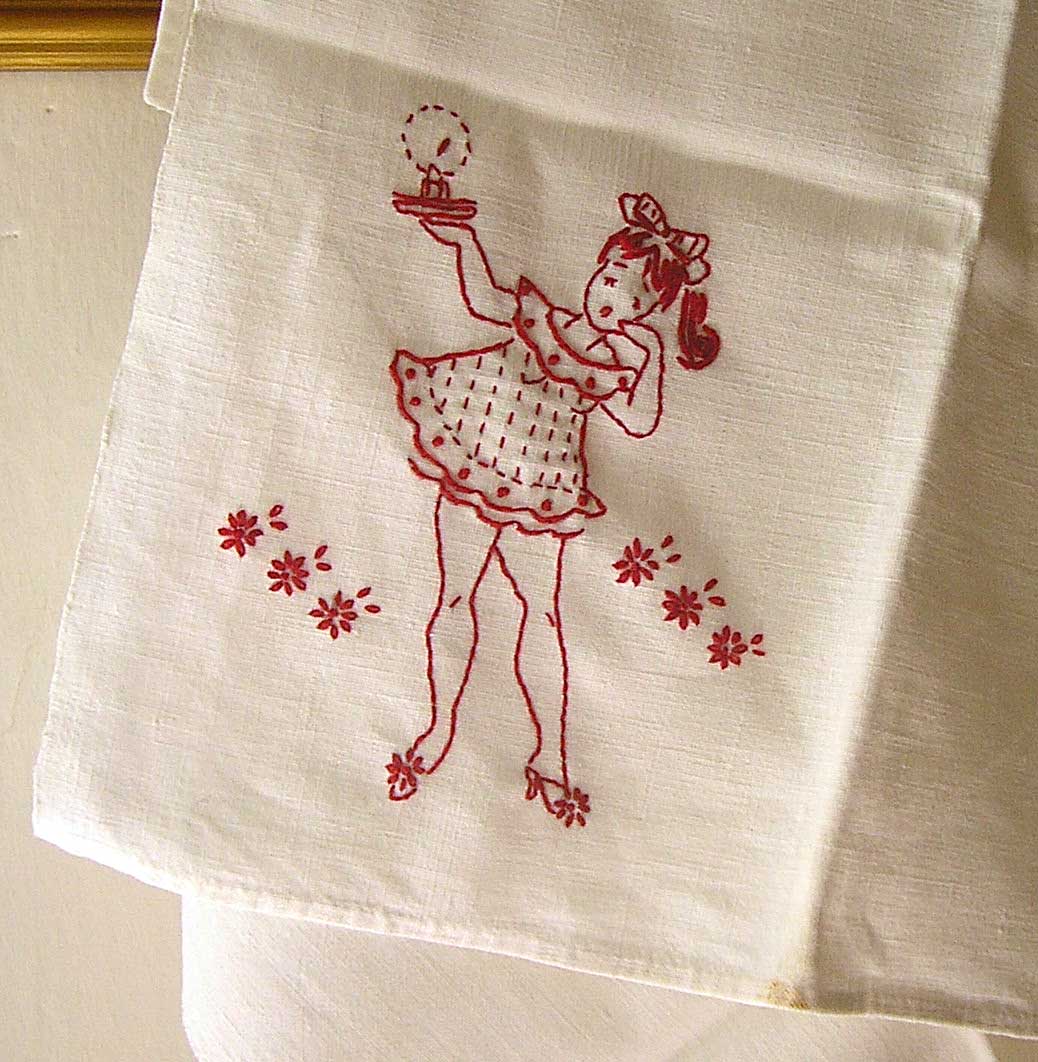 |
| Embroidery sample: Redwork |
Redwork also known as: Turkey red embroidery, Penny squares
Bluework also known as: Blue redwork
About Redwork
Redwork embroidery, as simple as its name suggests, is embroidery with red cotton thread over white fabric. It took its name from an embroidery thread known as Turkey Red. The manufacturing process for “Turkey Red” was complex and a well-kept secret for decades. The complete “recipe” for the original dye is still a mystery. Redwork was extremely popular among the common people because the cotton thread was not only colorfast, but it was less costly than the silk threads commonly used at the time, and the designs were easy to embroider.
History
Interestingly, Redwork was not a completely new find in the embroidery world. It used basic stitches like stem stitch, outline stitch, and split stitch for outlining patterns. However, the popularity peaked around the turn of the 19th century (somewhere around 1880s). There is a reason behind this sudden upsurged popularity. Silk was a very expensive material during the time and cotton was cheap as well as available in plentiful. Moreover, there were many people who were not caught up in the fashion of the ‘crazy quilting’ of those times. So, the peasants and the middle-class household used cotton fabric to make embroidery and decorate their homes. Around this time, a new colorfast thread of red color came to be popular. This thread is a special manufacture from the country of Turkey, came to be called Turkey red. Ladies were ready to even pay a little extra to buy this thread. They then began to make outlining patterns exclusively with this red thread.
Around 1850’s Redwork traveled to America, where it was used more for quilting purposes. From about 1860s to around 1920s, schoolgirls were taught this form of embroidery. The dry goods stores in America sold small square pieces of white cotton fabric with a simple design stamped on it along with red thread for a penny. So, these were called ‘penny squares’. These were used to do Redwork and were put together to make covers for beds and quilts. Schoolgirls and orphans were taught Redwork as embroidery was almost an essential part of a woman’s lifestyle in those days. Redwork was referred to as ‘Penny square’ only for a brief period only when quilting was popular using these penny squares.
Embroidery was also taught in the schools of England. One of the schools that helped popularize Redwork is the Kensington school of England. The stem stitch, one of the main stitches used- even came to be known as the South Kensington Stitch as a result of it! It is popular that the split stitch is also known as Kensington outline stitch or English Kensington stitch, but I am not so sure of this.
Redwork began to see a decline as more variety of colorfast thread came into availability. Such access to a variety of better threads in the open market gave rise to the experimenting with different kinds of embroidery and stitches, leaving Redwork behind.
Around 1910 and 1930 a new colorfast thread of blue color came into popularity and work with blue thread came to be known as Bluework or Blue Redwork.
Redwork today
Redwork saw a revival only since the past few years. We could be thankful to the quilting enthusiasts mainly for its rebirth. Since Redwork was majorly associated with quilting using penny squares, modern quilting has tried to revive this art.
Patterns used
Traditionally, the patterns were simple comprising of animals, children, kitchen themes, and nature. Since this embroidery work consists of just a simple outlining of patterns, a lot of other themes and types of patterns have been experimented with.
Stitches used
1. Running Stitch
2. Back Stitch
3. Stem Stitch
4. Outline Stitch
5. Split Stitch
6. Lazy Daisy
7. French Knot
Tracing Designs
1. draw directly over the fabric. Since the patterns are simple, most of them can freely be drawn directly over the fabric with a pencil or removable ink.
2. trace over the fabric from the source, using a tracing paper.
3. transfer the designs from a traceable source.
Next, go to Redwork and Bluework lessons:
Learn other traditional embroideries from around the world. Make something beautiful today.❤️


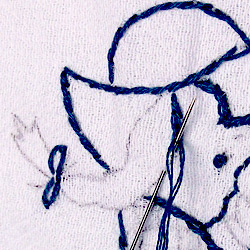

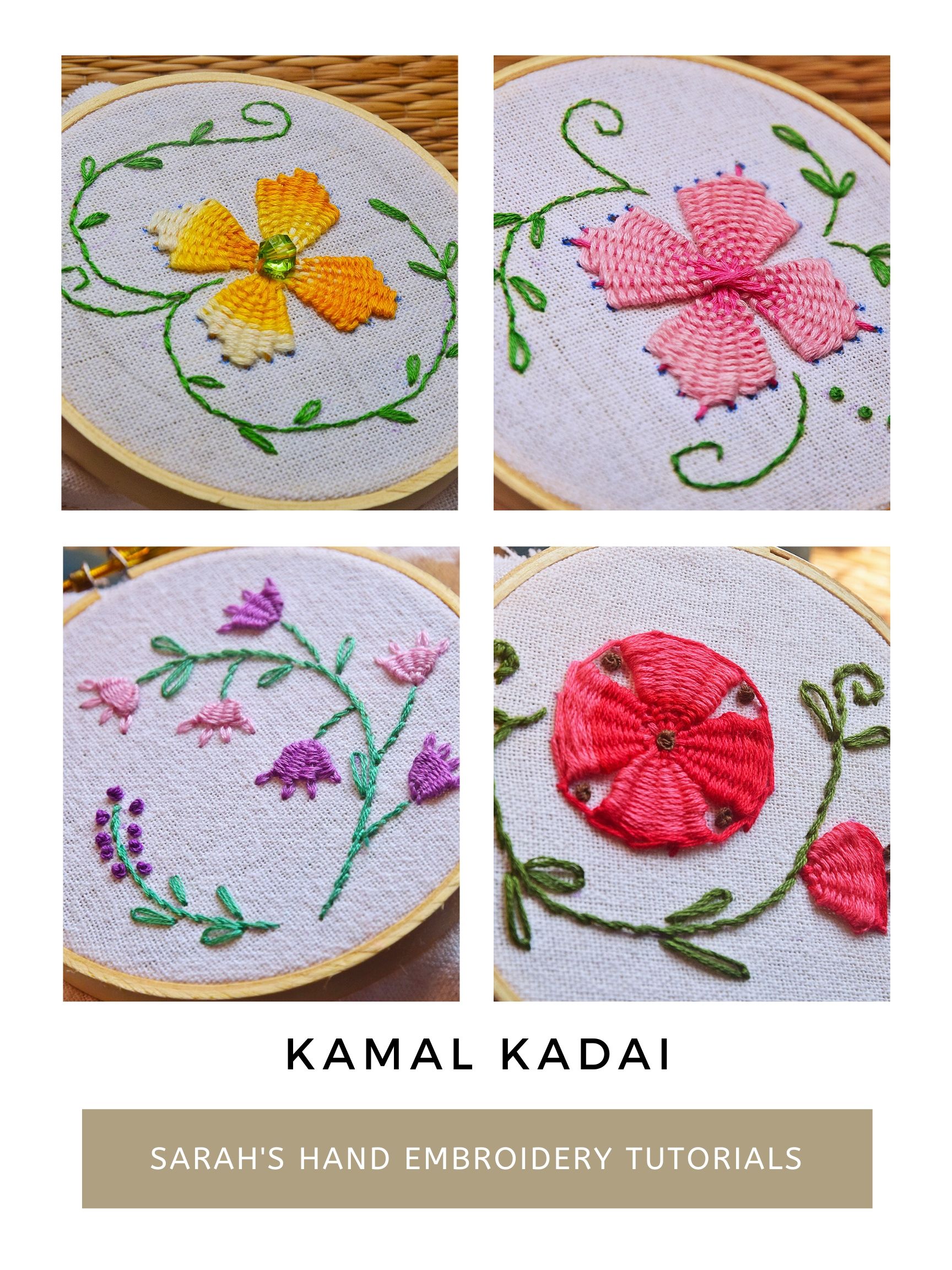
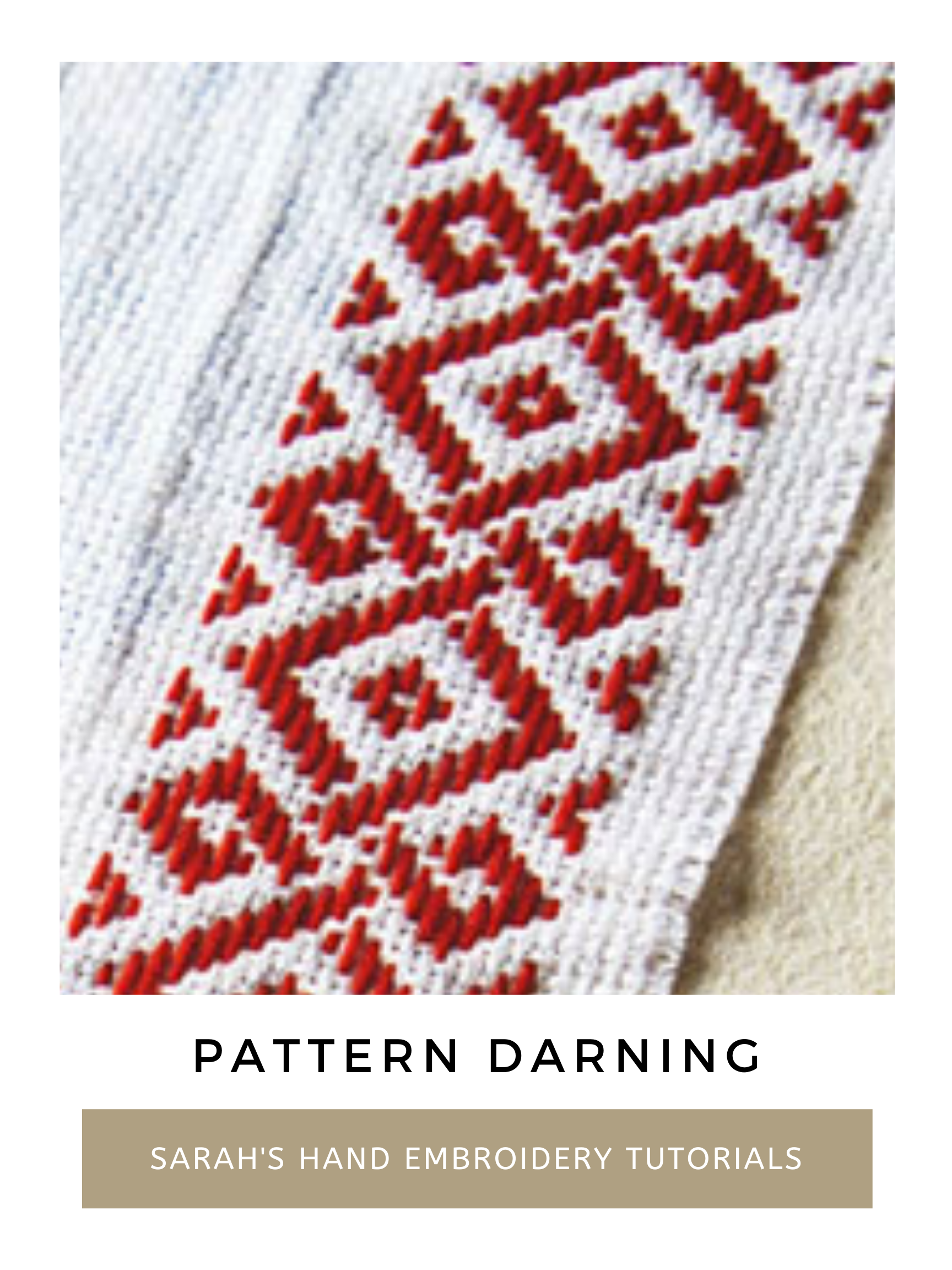
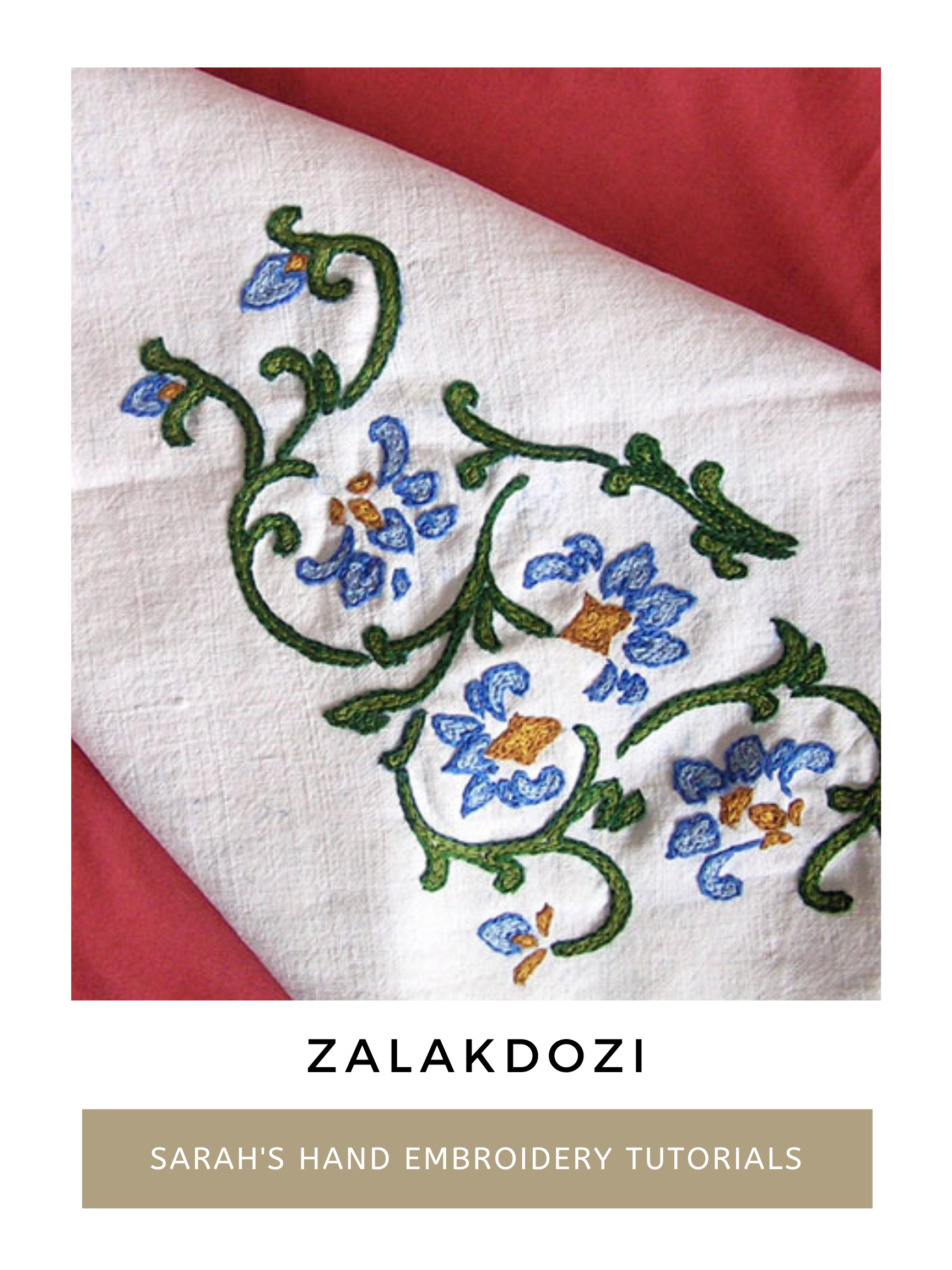










Hi there sarah .. am glad you like my red work so am posting here . I learnt hand embroidery from your website 9years back.. still going on. am so happy for getting appreciation form my mentor .. thanks…

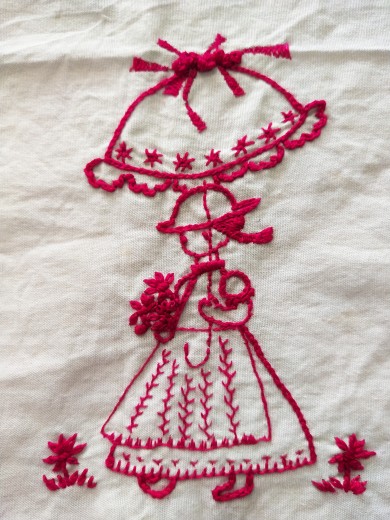
Dear Sara,
Such a beautiful piece of work. Thank you for sharing it here. It will inspire many others. I love it! 💕
Hi!, i wanted to know if there is specific stitches for redwork. thank you very much!
Mostly these stitches are specifically used:
1. Running stitch
2. Back stitch
3. Stem stitch
4. Outline stitch
5. Split stitch
6. Lazy daisy
7. French knot
This is not at all an easy work. Its not everybody’s cup of tea. Very nice hand work.
Thank you, Anusia!
hi,i am currently in pittsburgh…i know lots of embriodary designs and i can stitch those designs for you ….right now i donot have any sample but believe me i’ll give you best work….
i m masroor ahmed and a textile designer in pakistan…i have a great intrest in embriodary work and have keen intrest in joing u people…plz if have …….than contact me at
masroor_786@ymail.com
0092-3054593869
Voce trabalha muito bem com redwork.Parabens
Ola Rosita,
obrigado. 🙂
muito belo os seus trabalhos!
Parabéns!
Olá!, obrigado. 🙂
Translated from: Hello, Thank you.